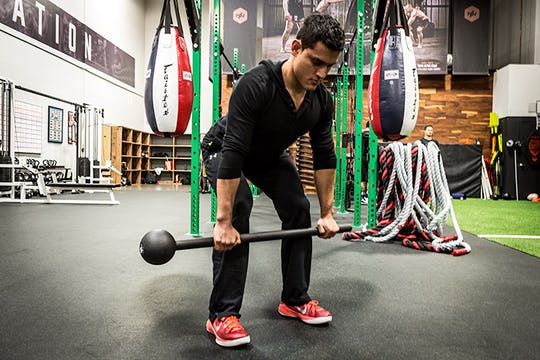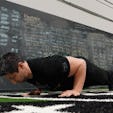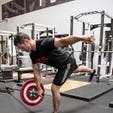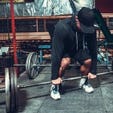 The purpose of functional training is to achieve unconventional training abilities, including (but not limited to): strength, conditioning, agility, balance, power, explosiveness, flexibility, and mobility using minimal daily time and equipment. This is achieved by using effective exercises, workouts, and programs that reinforce balance and progression.
The purpose of functional training is to achieve unconventional training abilities, including (but not limited to): strength, conditioning, agility, balance, power, explosiveness, flexibility, and mobility using minimal daily time and equipment. This is achieved by using effective exercises, workouts, and programs that reinforce balance and progression.
I recently attended the Onnit Level 1 Certification. The above statement is copied directly from the manual provided to each of us. Attending was an invaluable experience! It also showed me how to correct my squat and hinge as well as apply those movements to a variety of implements.
As someone who uses mostly kettlebells for resistance and has a history of lower back problems, I will articulate how the basic movement principles Onnit teaches applies to functional training and a practical life function.
The morning after a day full of flight delays, cancellations, and air travel which left me with a sore back, I got bundled up to go shovel about a foot of snow from the driveway. I was tired and extremely unhappy about the task at hand, but walked outside and started to shovel.
After scoop number two my back began to hurt and I felt the fatigue in my hamstrings and looked up unenthusiastically at all the work that lay before me. That is when I came to what should be an obvious conclusion, especially considering the previous couple of days’ teachings.
Applying Functional Training
I was rolling my back, my shoulders were forward, and I was lifting from my back with the weight of the snow in the shovel out in front of me. I realized that I could apply my new deadlifting technique using my improved hinge movement pattern to save my back. I also didn’t dread the task before me anymore.
I recognized that the 2-hand Deadlift that I learned with the Steel Mace is exactly what I was dealing with, except with a snow shovel. So I decided to put my new knowledge to the test.
- I pushed the shovel into the snow then hinged properly.
- I grabbed the shovel with a double overhand grip, much like the Steel Mace 2-Hand Deadlift.
- I maintained a neutral spine.
- I kept my chest up, shoulders back and level, and stood up with the snow in a manner exactly as I did with the Steel Mace.
The weight was no longer out in front of me and it felt good. No need to throw the snow with a twist of the torso. When scooping hundreds of times per session I figured it was best to stick with as simple and proper movement as possible.
It is also worth noting that I am right handed and tend to want my right hand to be on the top of the shovel. In order to foster a balanced body, I needed to consciously switch hands on the shovel, as one does with the Steel Mace 2-Hand Deadlift.
Also, I determined that I needed to do some warm-up and movement prep, as well as cool down for the hinge and squat before I started to shovel snow. This will help me to keep my body in a healthy, functional training order.
Functional Training Principles
Not only did I save my back while applying the functional training principles above, but I also got a functional training workout. I also applied some key principles of unconventional training. A few of them are:
- Versatility: The Steel Mace 2-Hand Deadlift functional training exercise was applied to a different task.
- Functionality: The Steel Mace 2-Hand Deadlift functional training exercise was applied to a real life function.
- Application: The fitness training was applied to another aspect of life.
- Longevity: Performing the shoveling correctly will allow me to perform it much later in life without injury.
In conclusion, I provided a real life example of how unconventional or functional training translates and how it can improve everyday tasks. I will be mindful of my other daily activities to determine if I need to make some corrections using proper functional training principles.



)





